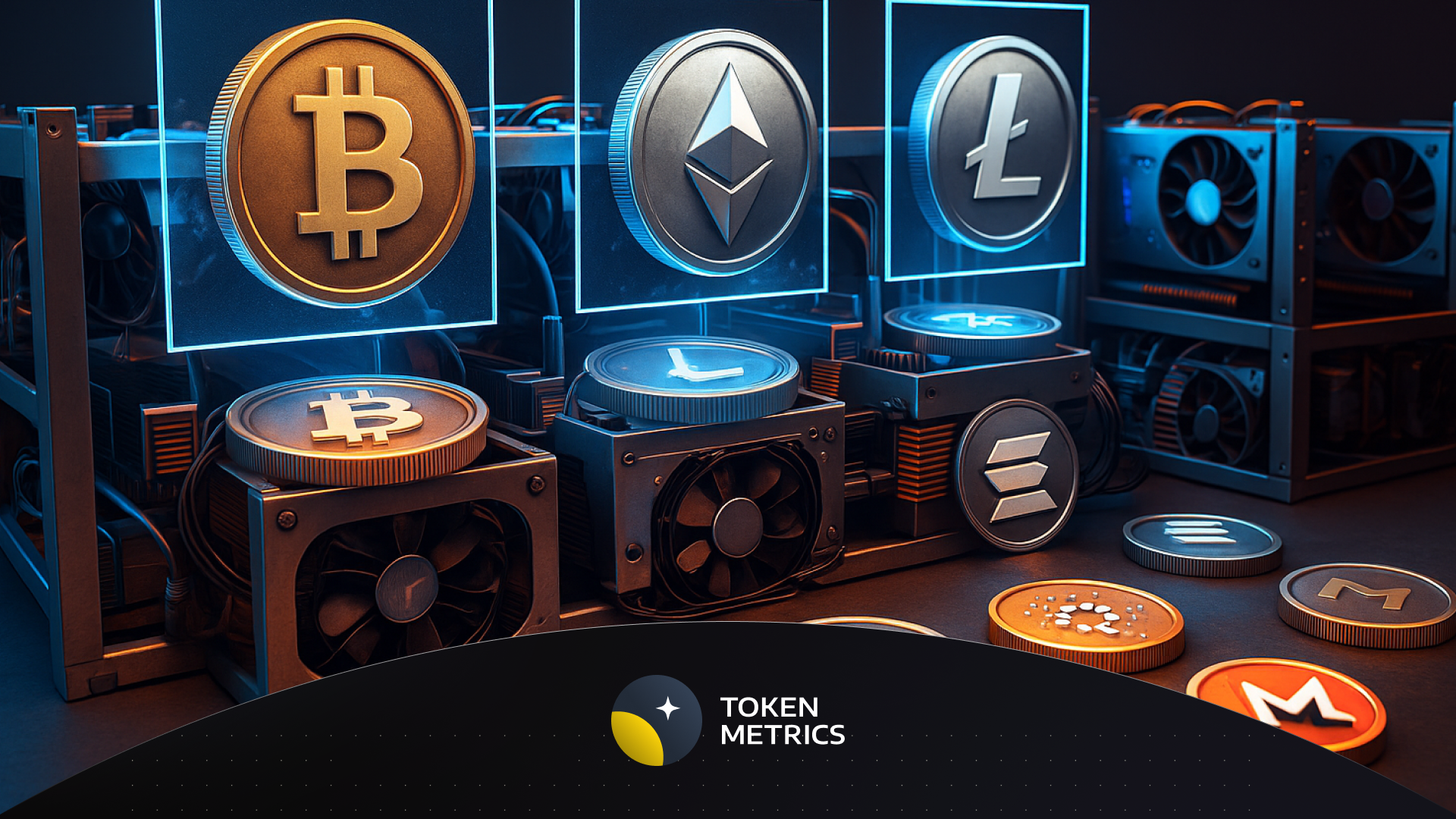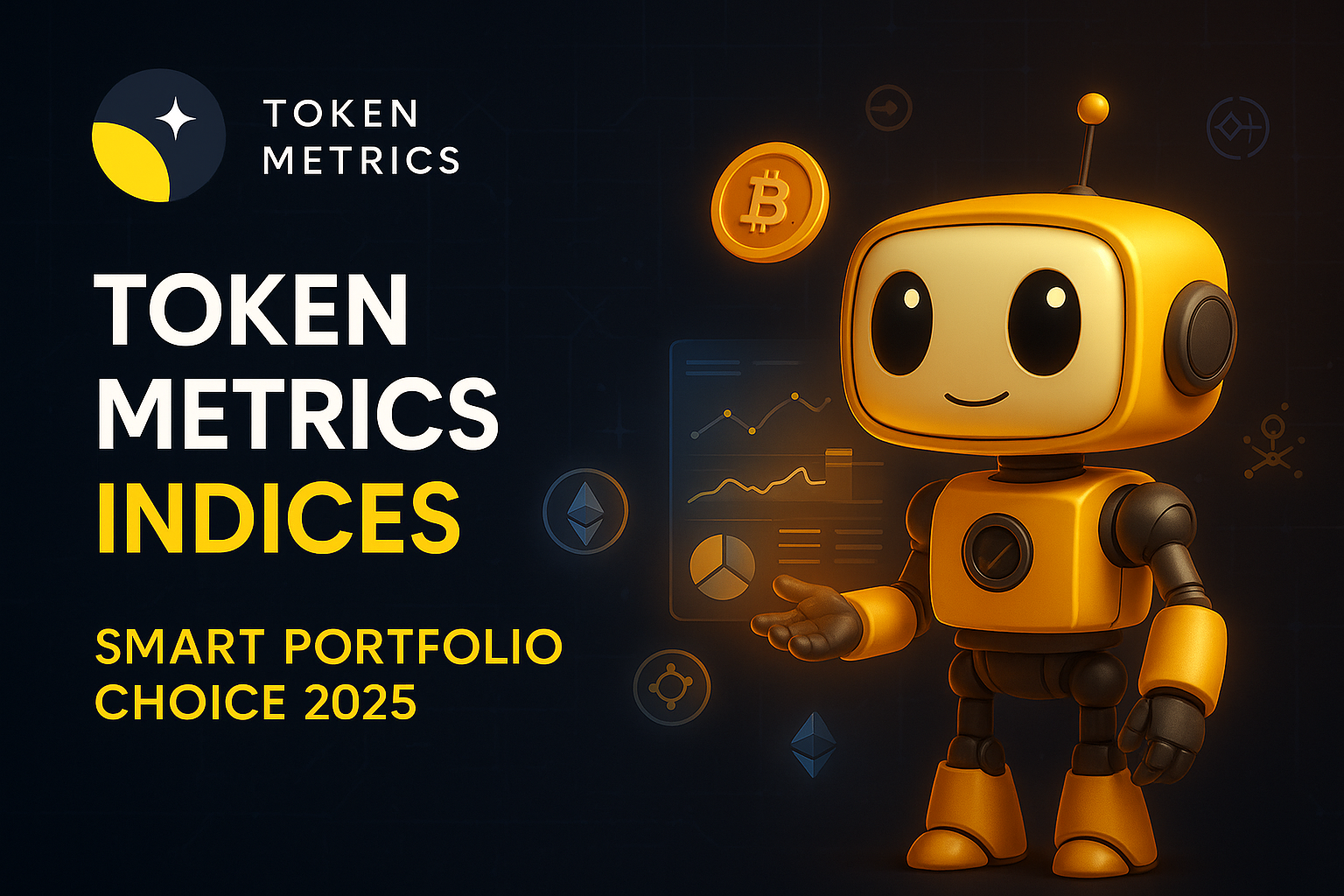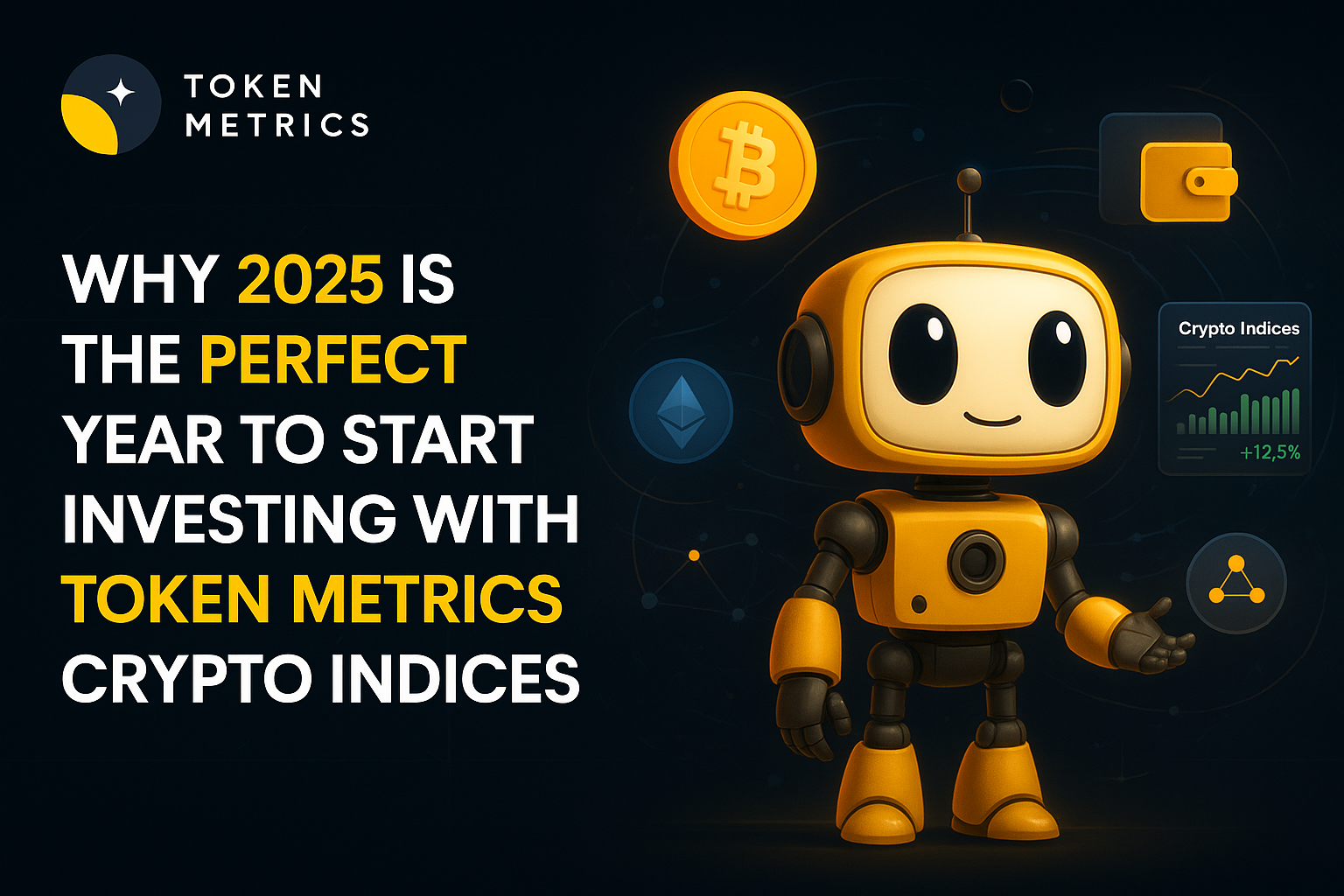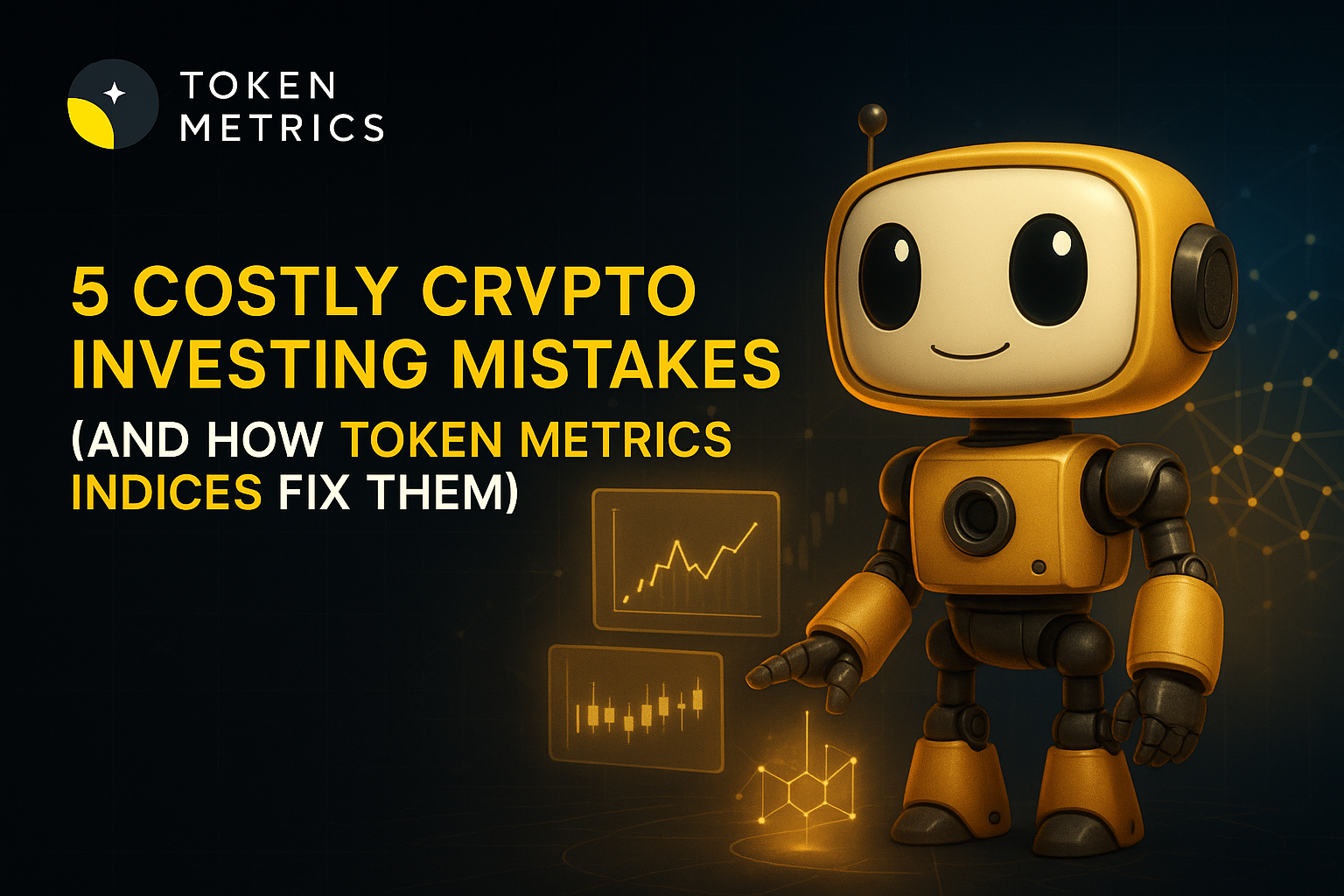
8 Best and Profitable Crypto to Mine - Complete List

Click here to buy Cryptocurrencies from Gate.io
Contact us at promo@tokenmetrics.com for marketing and sponsorship programs.
Cryptocurrency mining has become a popular way to earn passive income in the digital world. With the right resources and knowledge, individuals can generate profits by validating transactions on blockchain networks.
However, with the vast number of cryptocurrencies available, choosing the best ones to mine can take time and effort.
This comprehensive guide will explore the top cryptocurrencies to mine in 2023, providing you with valuable insights and information to make informed decisions.
What is Crypto Mining?
Cryptocurrency mining is the process of validating transactions on a blockchain network by using computational power.
Miners contribute their computing resources to solve complex mathematical problems, ensuring the accuracy and security of transactions. Once a miner successfully solves a problem, they are rewarded with a certain amount of cryptocurrency.
Types of Crypto Mining
There are three main types of crypto mining: CPU mining, GPU mining, and ASIC mining.
1. CPU Mining
CPU mining, or Central Processing Unit mining, involves using the processing power of a computer's CPU to mine cryptocurrencies. This method is the least efficient and is generally not profitable for most cryptocurrencies.
2. GPU Mining
GPU mining, or Graphics Processing Unit mining, utilizes the power of a computer's graphics card to mine cryptocurrencies. This method is more efficient than CPU mining and is commonly used for mining altcoins.
3. ASIC Mining
ASIC mining, or Application-Specific Integrated Circuit mining, involves using specialized hardware designed specifically for mining cryptocurrencies.
ASIC miners are highly efficient and powerful, making them the preferred choice for mining popular cryptocurrencies like Bitcoin.
The Best Crypto to Mine in 2023
When it comes to mining cryptocurrencies, profitability is a key consideration. Here are the top cryptocurrencies that offer promising mining opportunities in 2023:
1. Bitcoin (BTC)
Current Mining Reward: 6.25 BTC/block
Profitability: Approximately $250 per month on average
Description: Bitcoin continues to be the most popular and profitable cryptocurrency to mine. Its high market value and widespread adoption make it a lucrative choice for miners.
2. Monero (XMR)
Current Mining Reward: 0.6 XMR/block
Profitability: Approximately $8.50 per month
Description: Monero is a privacy-focused cryptocurrency that offers enhanced anonymity. Its ASIC-resistant algorithm makes it accessible for CPU and GPU miners.
3. Litecoin (LTC)
Current Mining Reward: 12.5 LTC/block
Profitability: Approximately $66.74 per month
Description: Litecoin is a popular altcoin that offers faster transaction confirmation times than Bitcoin. Its Scrypt algorithm makes it suitable for GPU mining.
4. Ravencoin (RVN)
Current Mining Reward: 2500 RVN/block
Profitability: Approximately $87 per month
Description: Ravencoin is a relatively new cryptocurrency focusing on asset transfer and decentralized applications. It utilizes the KawPow protocol, which is ASIC-resistant.
5. Zcash (ZEC)
Current Mining Reward: 2.5 ZEC/block
Profitability: Approximately $100 per month
Description: Zcash is known for its privacy features, allowing users to conduct private transactions. Its Equihash algorithm makes it suitable for GPU mining.
6. Dogecoin (DOGE)
Current Mining Reward: 10,000 DOGE/block
Profitability: Approximately $27 per month
Description: Dogecoin started as a meme cryptocurrency but has gained significant popularity. Its Scrypt algorithm makes it suitable for CPU and GPU mining.
7. Dash (DASH)
Current Mining Reward: 1.08 DASH/block
Profitability: Approximately $306.31 per month
Description: Dash focuses on instant and private transactions. Its X11 algorithm makes it suitable for ASIC and GPU mining.
8. Grin (GRIN)
Current Mining Reward: 60 GRIN/block
Profitability: Approximately $43.32 per month
Description: Grin is an open-source cryptocurrency that prioritizes privacy and scalability. Its MimbleWimble algorithm makes it suitable for GPU mining.
It's important to note that profitability can vary based on factors such as electricity costs, mining difficulty, and market conditions. Conduct thorough research and consider these factors before committing to mining any cryptocurrency.
How to Mine Cryptocurrency?
Mining cryptocurrencies requires a mining rig (computer), mining software or membership in a mining pool, and a reliable power supply. Here is a step-by-step guide on how to mine cryptocurrencies:
Step 1 - Choose a cryptocurrency to mine based on profitability and your hardware capabilities.
Step 2 - Set up a mining rig with the necessary hardware components, such as CPUs, GPUs, or ASICs.
Step 3 - Install mining software compatible with your chosen cryptocurrency.
Step 4 - Join a mining pool to increase your chances of earning rewards.
Step 5 - Configure your mining software to connect to the mining pool.
Step 6 - Start mining and monitor your mining operation for optimal performance.
Click here to buy Cryptocurrencies from Gate.io
Contact us at promo@tokenmetrics.com for marketing and sponsorship programs.
Pros and Cons of Crypto Mining
Like any investment, cryptocurrency mining has its pros and cons. Here are some key advantages and disadvantages to consider:
Pros:
- Potential for passive income.
- Opportunity to support decentralized networks.
- Possibility of earning valuable cryptocurrencies.
- Flexibility in choosing mining hardware and software.
Cons:
- High initial investment in mining equipment.
- Electricity costs can be high.
- Mining difficulty can increase over time, reducing profitability.
- Market volatility can impact the value of mined cryptocurrencies.
Is Cryptocurrency Mining Profitable?
The profitability of cryptocurrency mining depends on various factors, including electricity costs, mining difficulty, and market conditions.
While mining popular cryptocurrencies like Bitcoin may require substantial investments and specialized hardware, there are still opportunities to profitably mine smaller, emerging cryptocurrencies.
It's crucial to conduct thorough research, calculate potential costs and rewards, and stay informed about industry trends to make informed decisions about cryptocurrency mining.
Also Read - How Helium Miner Works?
Alternatives to Cryptocurrency Mining
If cryptocurrency mining is not suitable for you, there are alternative ways to participate in the crypto industry. Here are a few options:
- Trading: Buy and sell cryptocurrencies on exchanges to take advantage of price fluctuations.
- Staking: Hold and stake cryptocurrencies to earn rewards and support the network's operations.
- Investing: Purchase cryptocurrencies as long-term investments based on their growth potential.
- Cloud Mining: Rent mining equipment from a service provider and earn rewards without physical hardware.
Consider your risk tolerance, investment goals, and available resources when exploring alternatives to cryptocurrency mining.
Final Thoughts
Cryptocurrency mining can be profitable for individuals with the necessary resources and knowledge.
By choosing suitable cryptocurrencies to mine and adopting efficient mining practices, you can generate passive income and contribute to the growth and security of blockchain networks.
However, staying informed about market conditions, mining difficulty, and technological advancements is crucial.
Conduct thorough research, consider both the advantages and disadvantages, and make informed decisions based on your circumstances.
Remember, the cryptocurrency market is highly volatile, and profitability can fluctuate. Stay adaptable, monitor industry trends, and continuously evaluate your mining operations to maximize potential returns.
Frequently Asked Questions
Q1. What is cryptocurrency mining?
Cryptocurrency mining uses computational power to validate transactions on a blockchain network and earn rewards in the form of cryptocurrency.
Q2. How do I choose the best cryptocurrency to mine?
Consider mining difficulty, market value, and hardware requirements. Research each cryptocurrency's mining algorithm and profitability before making a decision.
Q3. Can I mine cryptocurrencies with my regular computer?
While mining specific cryptocurrencies with a regular computer is possible, it is generally not profitable. Specialized mining hardware is often required for efficient mining.
Q4. How can I maximize profitability in cryptocurrency mining?
To maximize profitability, consider factors such as electricity costs, mining difficulty, and market conditions. Continuously monitor and optimize your mining operations for optimal performance.
Q5. Can I mine multiple cryptocurrencies simultaneously?
It is possible to mine multiple cryptocurrencies simultaneously using different mining rigs or mining pools supporting various cryptocurrencies.
Q6. Are there any legal considerations for cryptocurrency mining?
Cryptocurrency mining legality varies by country. Research and comply with local regulations regarding cryptocurrency mining to ensure legal operation.
Q7. Can I mine cryptocurrencies on my mobile phone?
While mining specific cryptocurrencies on mobile phones is possible, the limited computational power and potential hardware strain make it generally unprofitable and impractical.
Q8. What is the environmental impact of cryptocurrency mining?
Cryptocurrency mining can have a significant environmental impact due to the high energy consumption of mining operations. Consider using renewable energy sources or joining eco-friendly mining initiatives.
Q9. Can I mine cryptocurrencies without joining a mining pool?
Yes, it is possible to mine cryptocurrencies independently without joining a mining pool. This approach is known as solo mining but may result in less frequent rewards due to the lower hash rate.
Q10. How can I estimate the profitability of cryptocurrency mining?
Use mining profitability calculators to estimate potential earnings based on mining hardware, electricity costs, and current market conditions. Keep in mind that profitability can vary.
Disclaimer
The information provided on this website does not constitute investment advice, financial advice, trading advice, or any other advice, and you should not treat any of the website's content as such.
Token Metrics does not recommend that any cryptocurrency should be bought, sold, or held by you. Conduct your due diligence and consult your financial advisor before making investment decisions.
Click here to buy Cryptocurrencies from Gate.io
Contact us at promo@tokenmetrics.com for marketing and sponsorship programs.

.svg)

Create Your Free Token Metrics Account

.png)




%201.svg)
%201.svg)


%201.svg)









.svg)




.png)